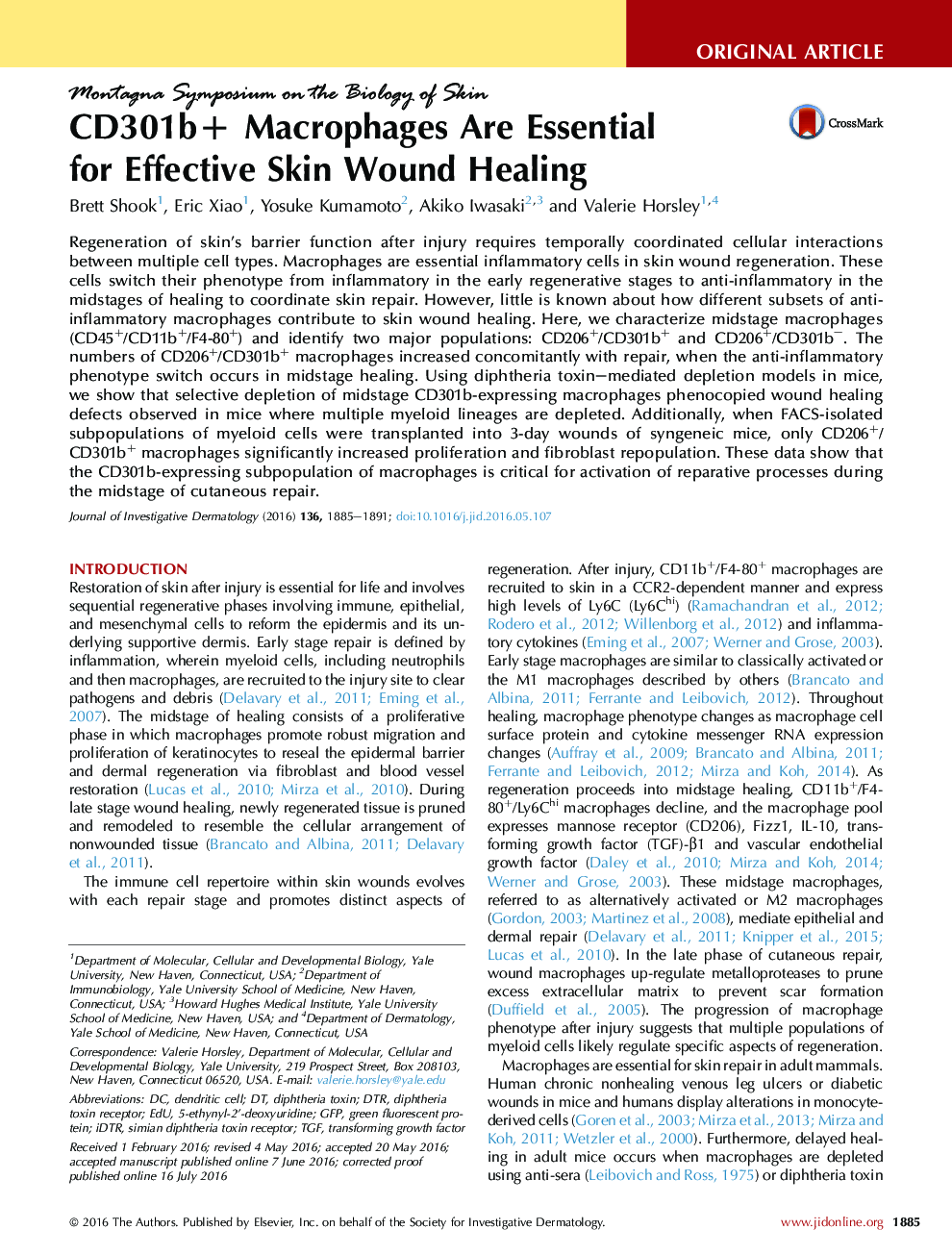| Article ID | Journal | Published Year | Pages | File Type |
|---|---|---|---|---|
| 3214882 | Journal of Investigative Dermatology | 2016 | 7 Pages |
Regeneration of skin’s barrier function after injury requires temporally coordinated cellular interactions between multiple cell types. Macrophages are essential inflammatory cells in skin wound regeneration. These cells switch their phenotype from inflammatory in the early regenerative stages to anti-inflammatory in the midstages of healing to coordinate skin repair. However, little is known about how different subsets of anti-inflammatory macrophages contribute to skin wound healing. Here, we characterize midstage macrophages (CD45+/CD11b+/F4-80+) and identify two major populations: CD206+/CD301b+ and CD206+/CD301b–. The numbers of CD206+/CD301b+ macrophages increased concomitantly with repair, when the anti-inflammatory phenotype switch occurs in midstage healing. Using diphtheria toxin–mediated depletion models in mice, we show that selective depletion of midstage CD301b-expressing macrophages phenocopied wound healing defects observed in mice where multiple myeloid lineages are depleted. Additionally, when FACS-isolated subpopulations of myeloid cells were transplanted into 3-day wounds of syngeneic mice, only CD206+/CD301b+ macrophages significantly increased proliferation and fibroblast repopulation. These data show that the CD301b-expressing subpopulation of macrophages is critical for activation of reparative processes during the midstage of cutaneous repair.
